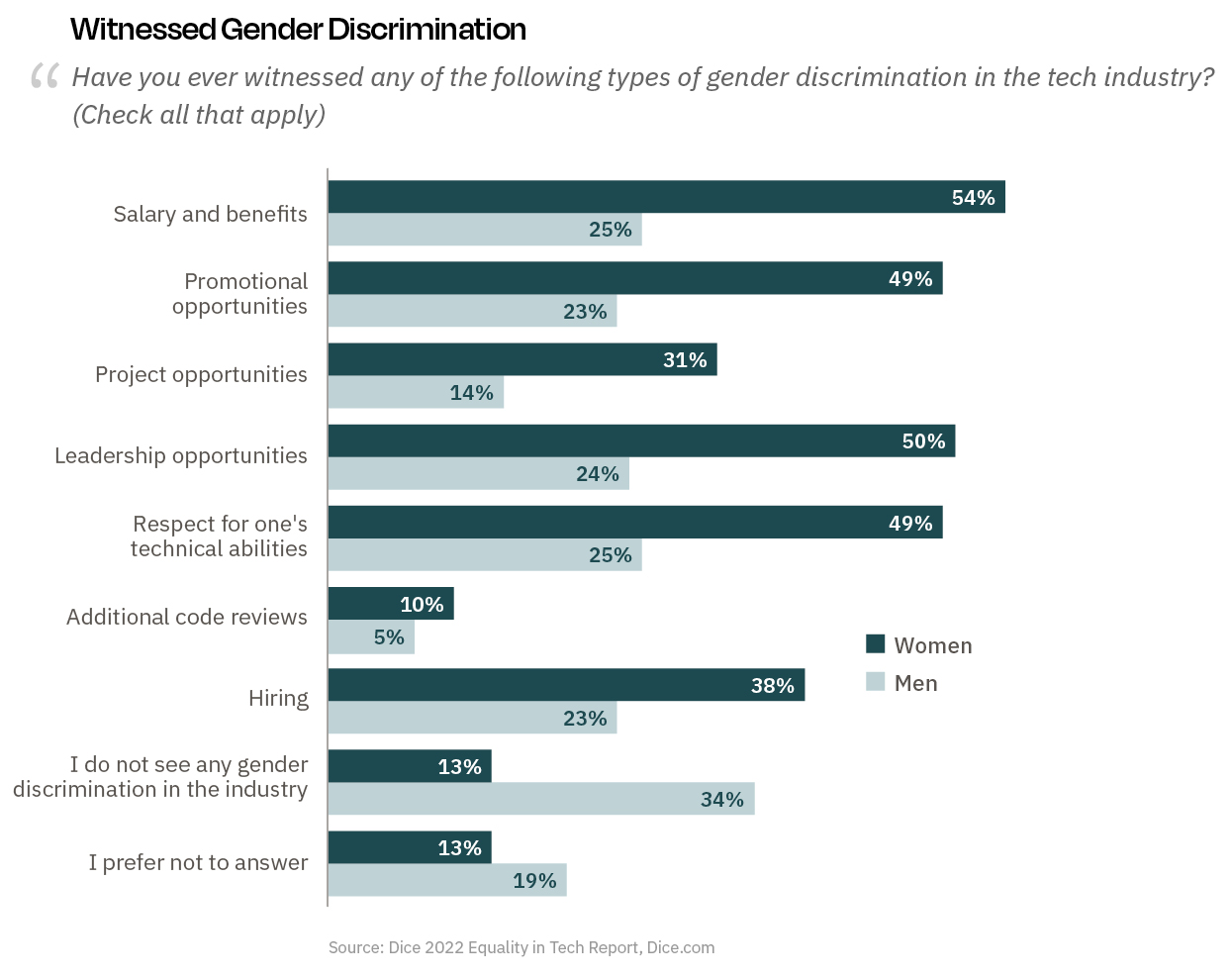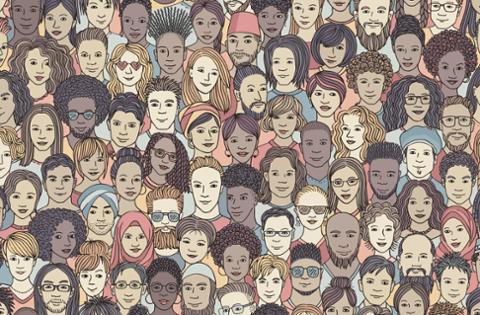
Race and gender discrimination remain a prevalent issue in tech. The latest Dice Equality in Tech Report shows that, between 2020 and 2021, little movement was seen in sentiment around discrimination for gender or racial groups. In some cases, discrimination increased.
The number of Black technologists who reported experiencing racial discrimination also rose year-over-year, from 48% in 2020 to 50% in 2021. That’s significantly ahead of the racial discrimination experienced by other groups, including Asian/Pacific Islander respondents (28%), Hispanic/Latino(a) respondents (25%), Asian Indian respondents (21%) and White respondents (10%).
Looking at gender discrimination, these is a stark discrepancy between technologists who identify as women and technologists who identify as men. Fifty-five percent of women indicated they have experienced gender discrimination in the workplace (down from 57% in 2020) compared to just 26% of men.
Where Discrimination is Happening in Tech
Discrimination occurs in many different forms. To combat it, it is important to understand where technologists are witnessing discrimination within their organizations. Salary and benefits, promotional opportunities, leadership opportunities and respect for one’s technical abilities are common instances where discrimination is currently witnessed at a higher rate across racial and gender groups.
For Black technologists, discrimination was most commonly perceived in the form of a lack of leadership opportunities (53%), while Hispanic/Latino(a) respondents most often witnessed salary and hiring discrimination (both 31%). Asian Indians most often witnessed discrimination in leadership and promotional opportunities (38%), and Asian/Pacific Islanders saw it most with promotional opportunities (35%). Among Whites, hiring (23%) was the most common response.

Technologists who identify as women were more likely to say they’d witnessed gender discrimination in salary and benefits, promotions, project and leadership opportunities, respect for technical abilities, additional code reviews and hiring. In many instances, the gap was quite stark: for example, 54% of those identifying as women said they’d witnessed salary-based gender discrimination, compared to 25% of men. Only 13% of those identifying as women said they’d never witnessed either gender discrimination in the tech industry, versus 34% of men.

Prevalent discrimination, from a lack of promotional opportunities to the everyday perception that they’re incapable of doing their jobs, can have an intensely detrimental impact on a technologist’s career.
As many recruiting and hiring professionals also have unique insight into and influence on their organizations’ workplace policies and culture, it’s important they’re aware of these common experiences of discrimination and push to create change within their organizations.
Read the Dice Equality in Tech Report to learn more about how technologists view and experience discrimination and equality in the workplace, as well as ways you can make an impact in your organization – and work toward a better future.


